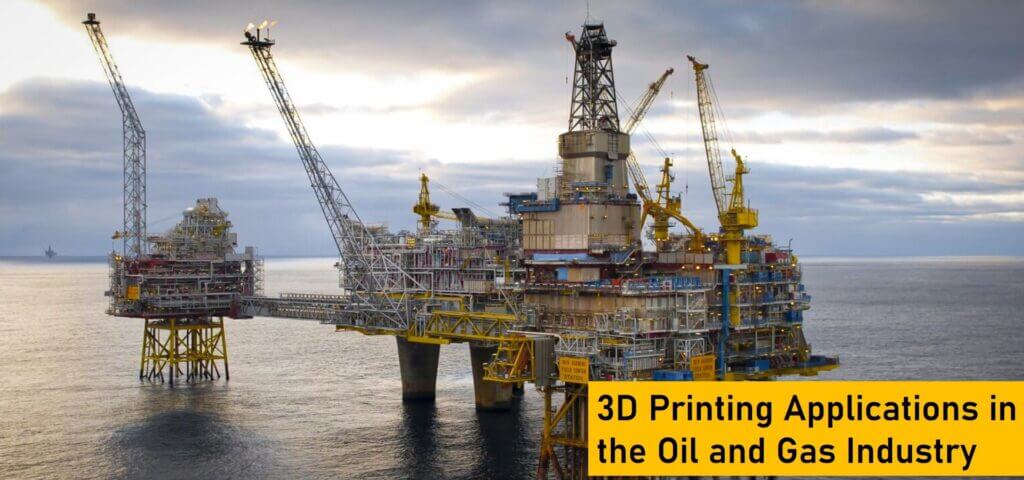In addition to being one of the core sectors, oil and gas is one of the biggest industries in the world in terms of dollar values. Companies in the oil and gas industry influence the global economy by engaging in the exploration, extraction, refining, and transportation of one of the primary fuel sources. But production and distribution of petroleum products are both complex and capital-intensive.
As highlighted by several studies oil and gas companies operate in volatile environments. They have to explore ways to overcome many primary challenges – controlling costs, reducing carbon emissions, finding reliable human resources, and keeping employees safe. Gas and oil companies these days overcome challenges and reduce risks using cutting-edge technologies like additive manufacturing or 3D printing.
About 83% of oil and gas companies are all set to leverage 3D printing technologies to engage in Manufacturing as a Service (MaaS). Also, several market forecast reports predict a surge in the demand for 3D printing in the oil and gas industry in the near run. We can understand the transformative impact of additive manufacturing technologies on the oil and gas industry based on these 3D printing applications.
Groundbreaking 3D Printing Applications in the Oil and Gas Industry
Accelerating Product Development
The volatile nature of the energy sector makes it essential for oil and gas companies to experiment with new ideas. They look for options to mitigate risks by evaluating new ideas elaborately. 3D printing technologies make it easier for these companies to evaluate ideas by supporting rapid prototyping.
Engineers can use 3D printers to visualize, design, and validate designs without putting in extra time and resources. They can further create multiple versions of the prototype and improve existing components by making changes to digital 3D models. Likewise, they can produce parts with complex geometries, and superior performance.
Facilitating On-Demand Production
Low-volume or on-demand production is one of the critical applications of 3D printing in the oil and gas sectors. Energy companies have been switching from subtractive manufacturing to 3D printing to reduce tooling costs and lead time.
They create 3D printing facilities across locations to produce tools or parts whenever the need arises. Also, many companies rely on reputable 3D printing companies to produce components like valves, pumps, gas turbine nozzles, and turbo-machinery near specific locations.
Repairing High-Value Components
Often maintenance and repairing needs of high-value components cause unplanned downtime. Engineers can operate the machines only after repairing or replacing the damaged components. 3D printing makes it easier for oil and gas companies to repair components quickly and remotely.
An engineer can produce the damaged component or spare part from digital files using a 3D printer. When he has access to a 3D printer, the component can be produced in hours in remote and offsite locations. Also, engineers can maintain the machines by replacing aging components with 3D-printed parts at regular intervals.
Simplifying Supply Chain Management
Most oil and gas companies operate using global supply chains. They have to partner with both local and international companies to ensure the supply of components and spare parts to various locations. 3D printing technologies help energy companies transform complex supply chains by facilitating on-demand and low-volume production of parts.
Energy companies already replace physical inventory with digital inventory by installing 3D printers at various sites. Engineers can use 3D printers to produce spare parts at the required location whenever the need arises. Hence, companies are no longer required to maintain large inventories or rely on global supply chains.
Reducing the High Cost of Downtime
An unplanned downtime of 3.65 days a year costs an oil and gas company $5.037 million. Every year the oil and gas sector incurs losses amounting to millions of dollars due to unplanned downtime. The oil and gas companies cannot prevent unplanned downtimes without reducing the lead time for spare parts.
Engineers can use 3D printers to produce spare parts from digital 3D models. They can use a 3D printer to produce spare parts in hours where they are required. Also, they can accelerate spare part production by availing of 3D printing services provided by local companies. Hence, oil and gas companies prevent unplanned downtime by 3D-printing spare parts.
Formulating New Standards
The absence of standardization and certification is often cited as one of the key challenges that affect the wider adoption of 3D printing technologies in the oil and gas sector. But DNV – the world’s leading classification society – addressed the challenge by introducing a new technical standard – DNV-ST-B203.
The additive manufacturing standard for metal parts specifies guidelines related to qualifications of parts produced using 3D printers for industries, including oil and gas. Oil and gas companies can follow the specifications to boost the safety and efficiency of 3D printing assets and 3D-printed products. The technical standard makes it easier for oil and gas companies to leverage 3D printing technologies.
Reducing Carbon Emissions
Oils and gas companies account for 33% of direct and indirect carbon emissions in the world. Many oil and gas companies reduce carbon emissions by switching from subtractive manufacturing to additive manufacturing. An oil and gas company can reduce carbon emissions by 45% using 3D printing instead of subtractive manufacturing.
Oil and gas companies combine polymer and metal 3D printing technologies to decarbonize operations by reducing spare part transportation needs, producing less waste, and recycling 3D printing materials. They will continue to invest in 3D printing to reduce carbon emissions significantly and continuously.
Conclusions
3D printing technologies have already started transforming the oil and gas industry. Oil and gas companies have been investing in 3D printing machines and materials to boost operational efficiency, control operational costs, speed up production, and simplify complex supply chains.
Also, many manufacturers have started developing custom 3D printers for oil and gas companies. But many analysts believe that oil and gas companies can leverage the benefits of 3D printing technology only by revamping their existing manufacturing infrastructure.
At the same time, they have to focus on keeping the production process reliable and repeatable to 3D-print parts that meet rigorous quality standards. However, oil and gas companies will continue to create new 3D printing applications and use cases to overcome many existing and emerging industry challenges.
About Aurum3D
We are amongst the major 3D printing companies in Bangalore, India. We have been providing SLS, SLA and custom FDM 3D printing services to almost all major industries including the oil and gas industry. Please feel free to get in touch with us for your custom needs, our 3D printing solutions experts will get back to you within one business day.

